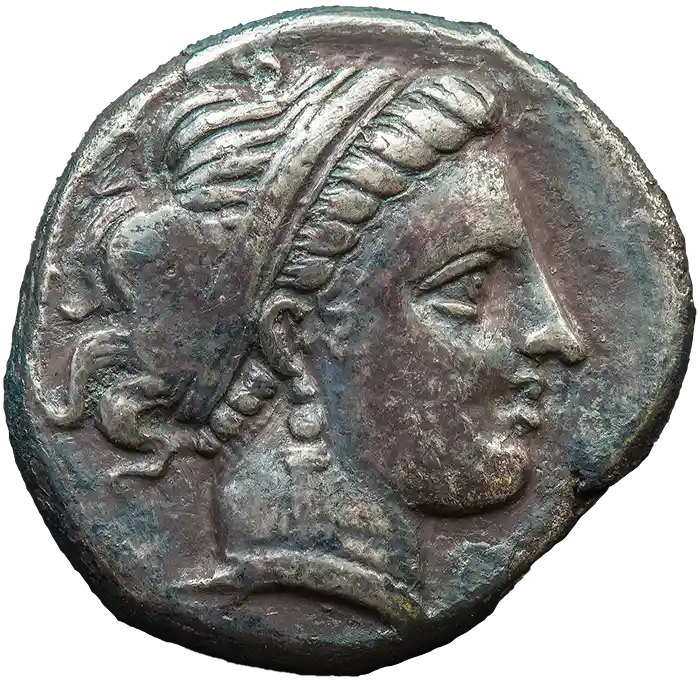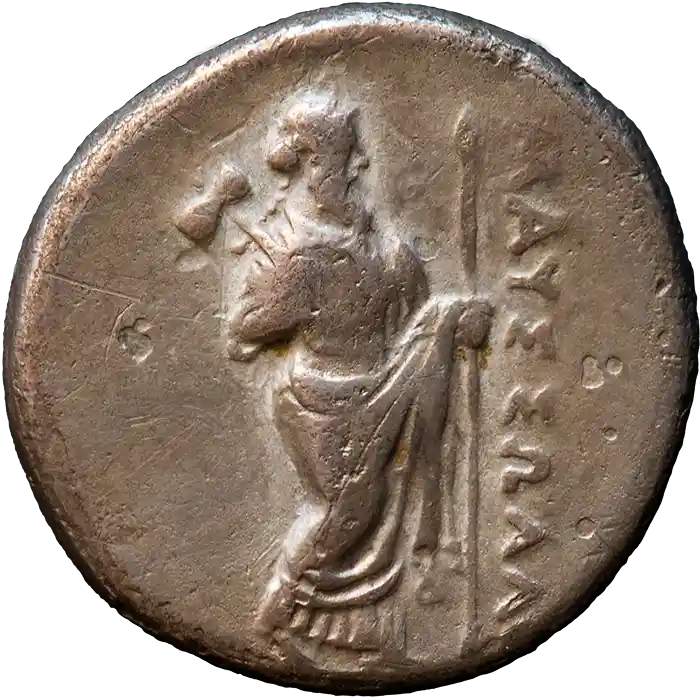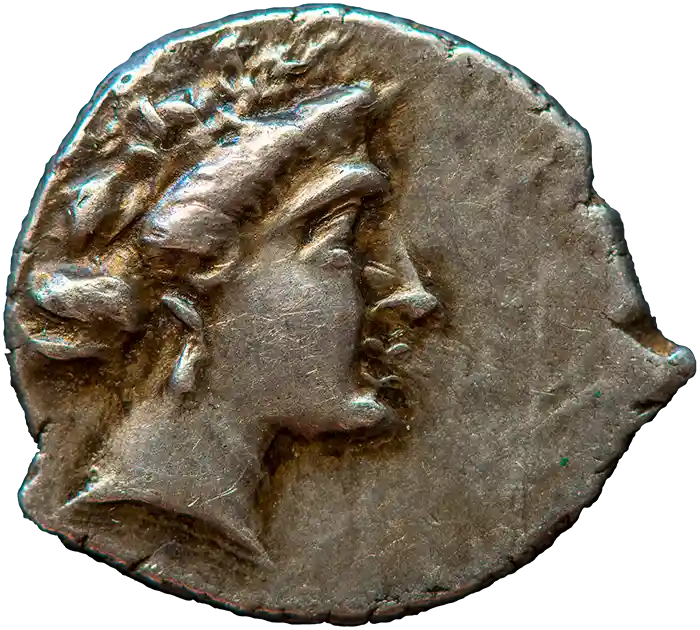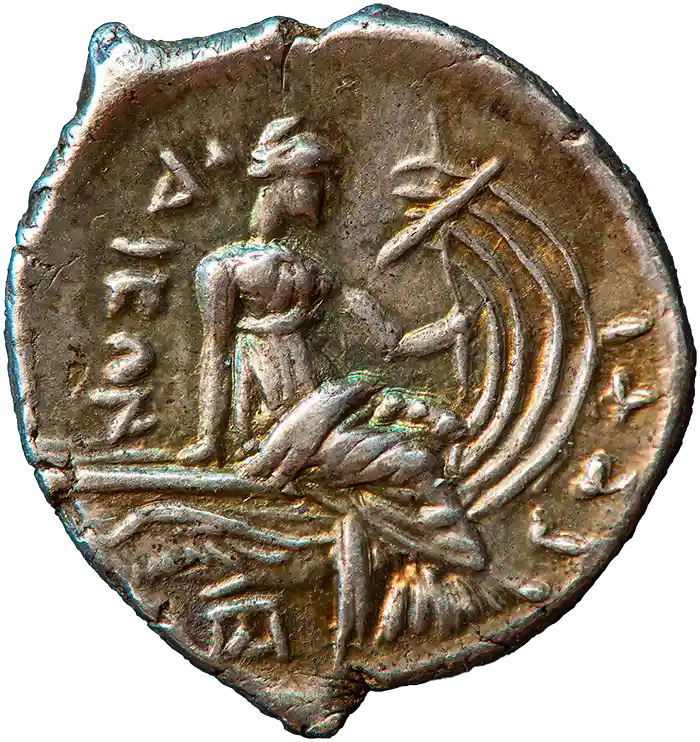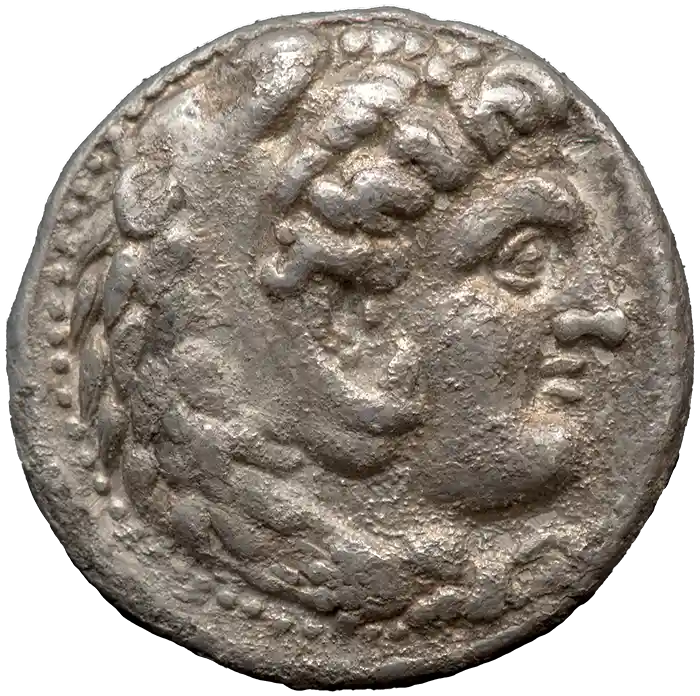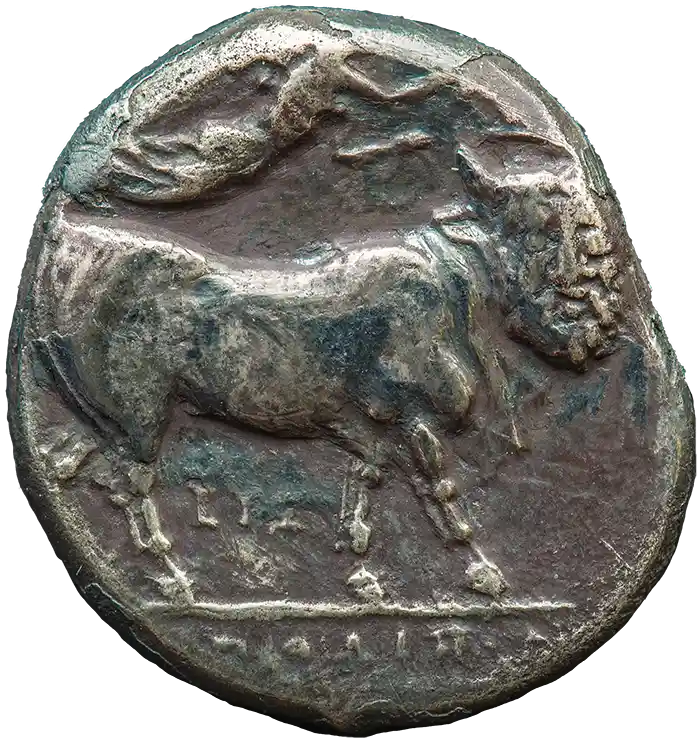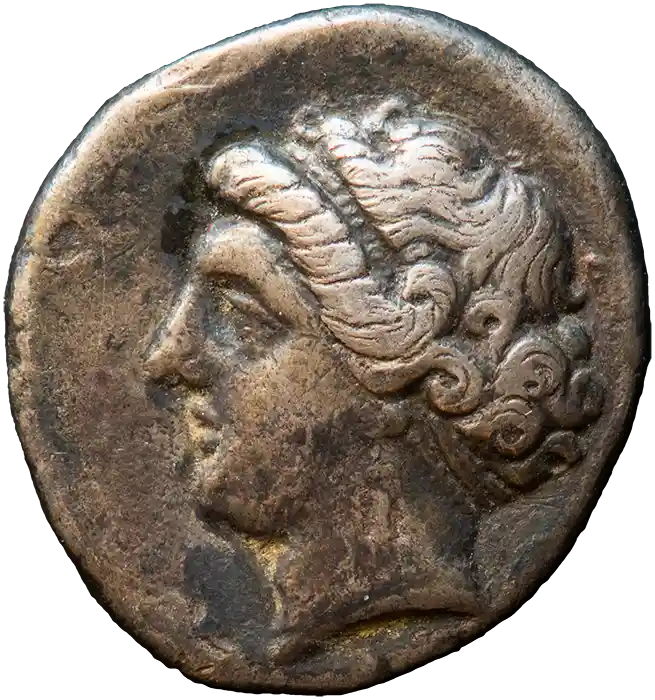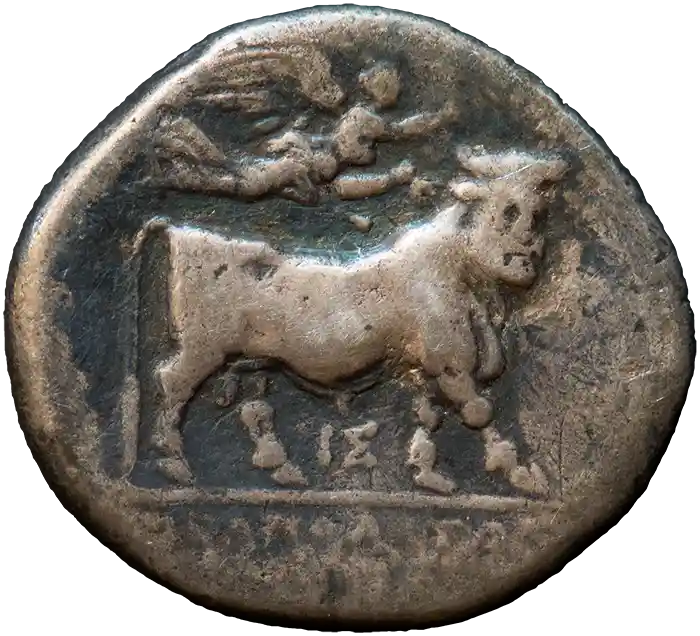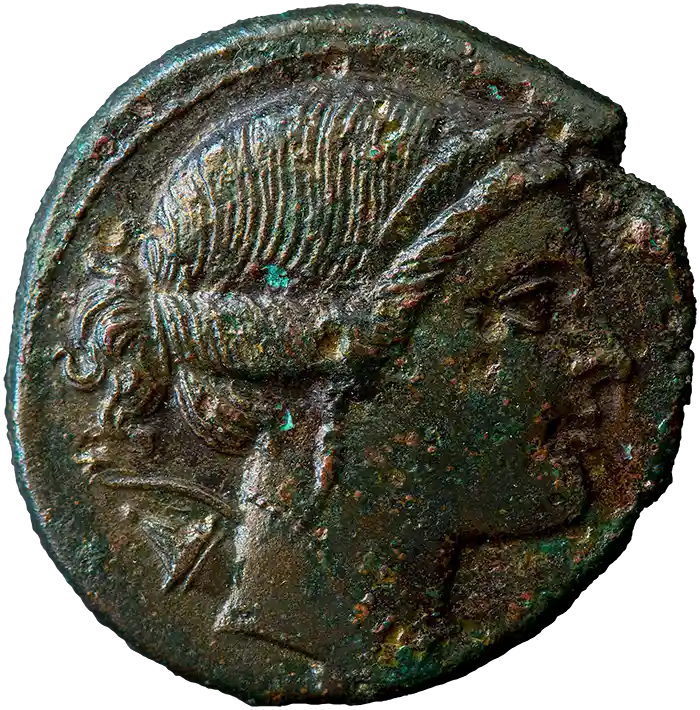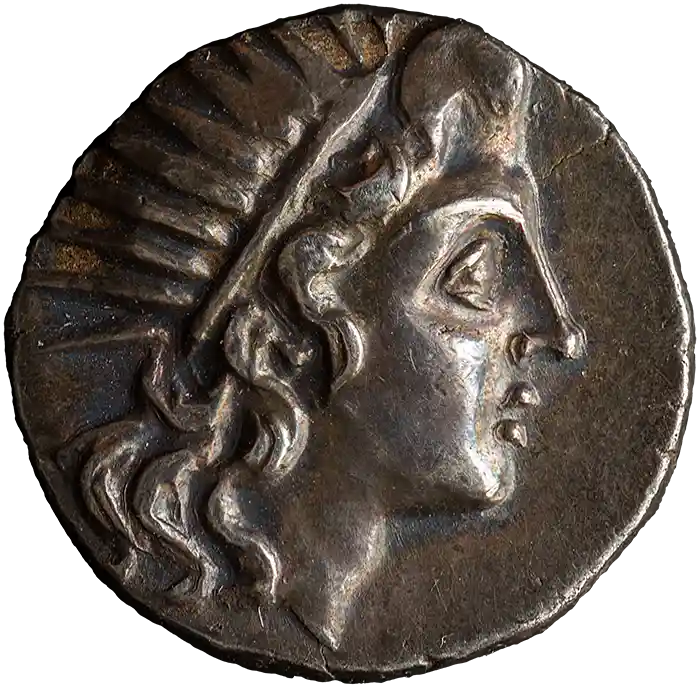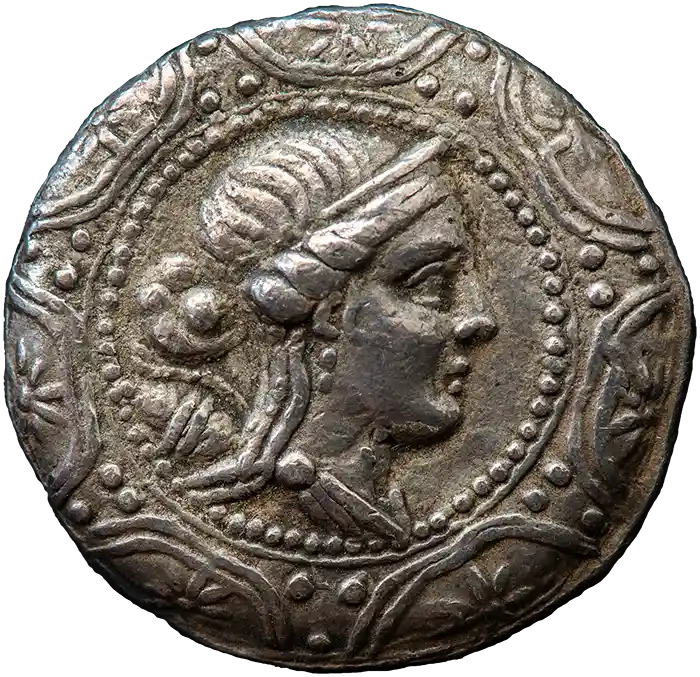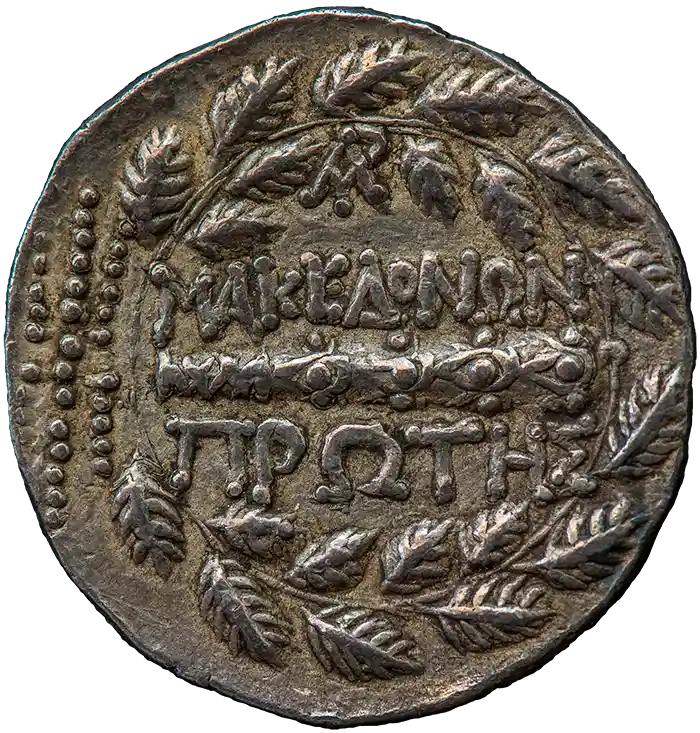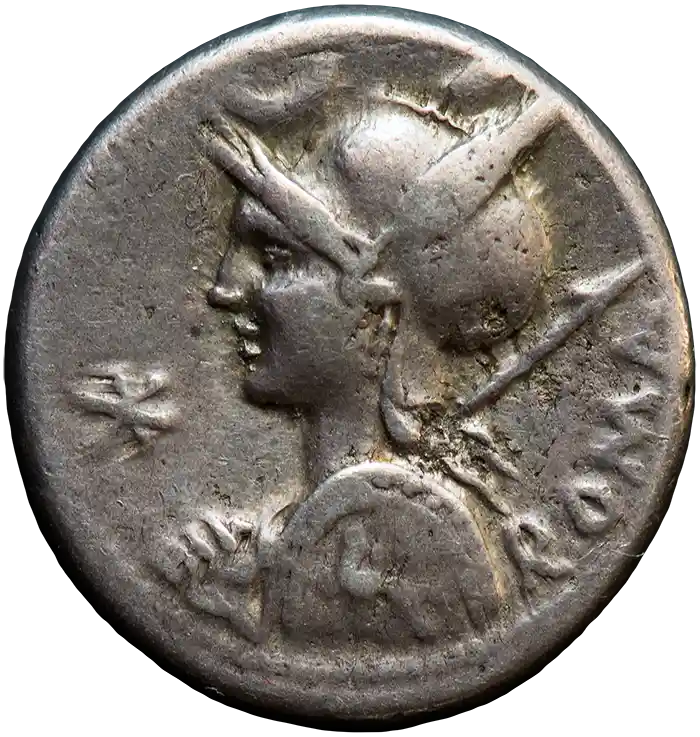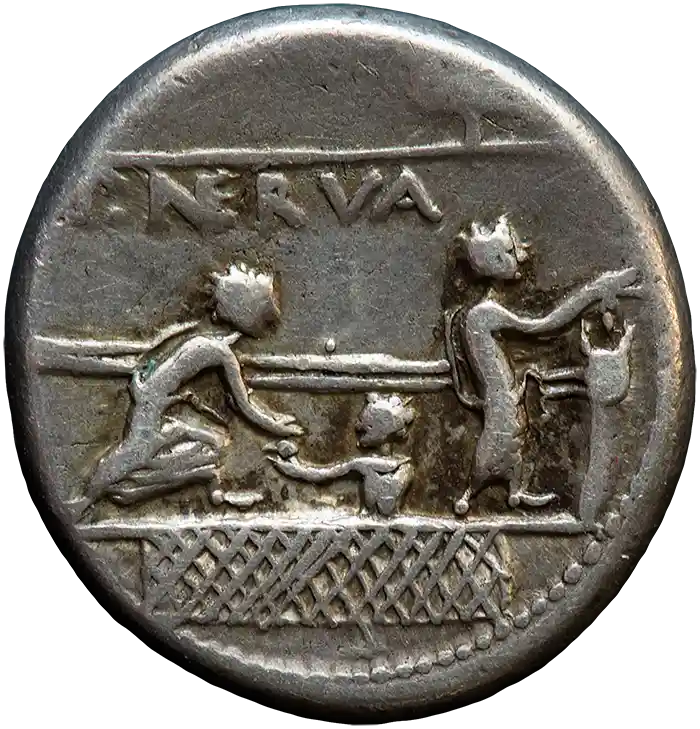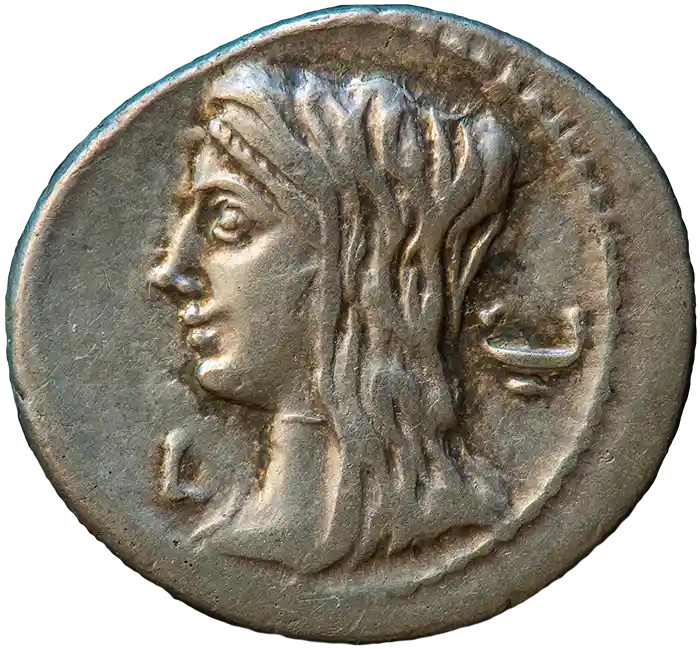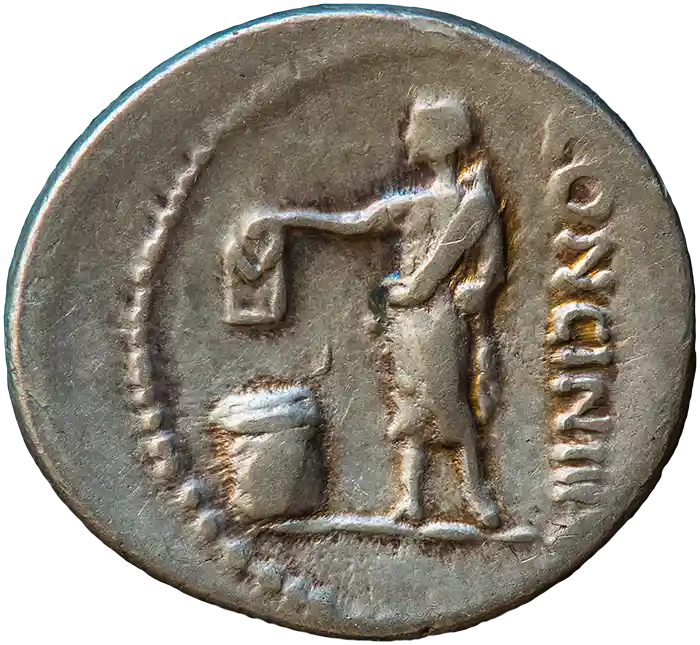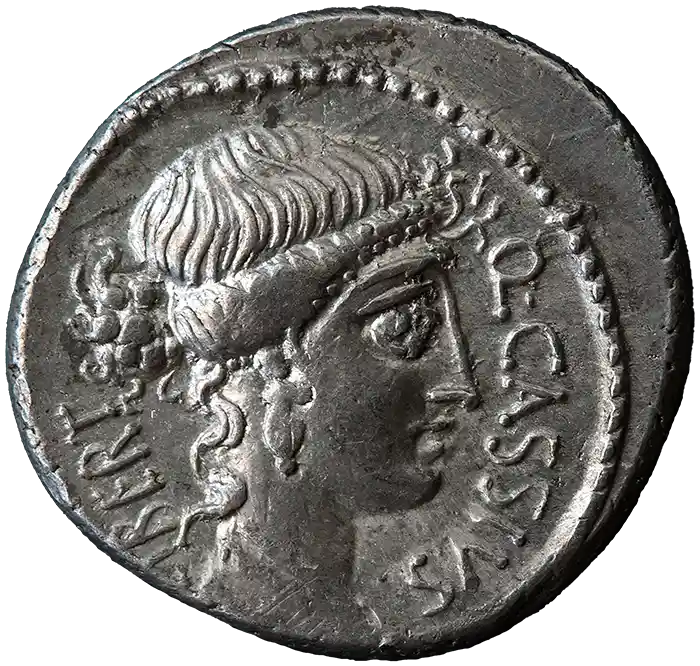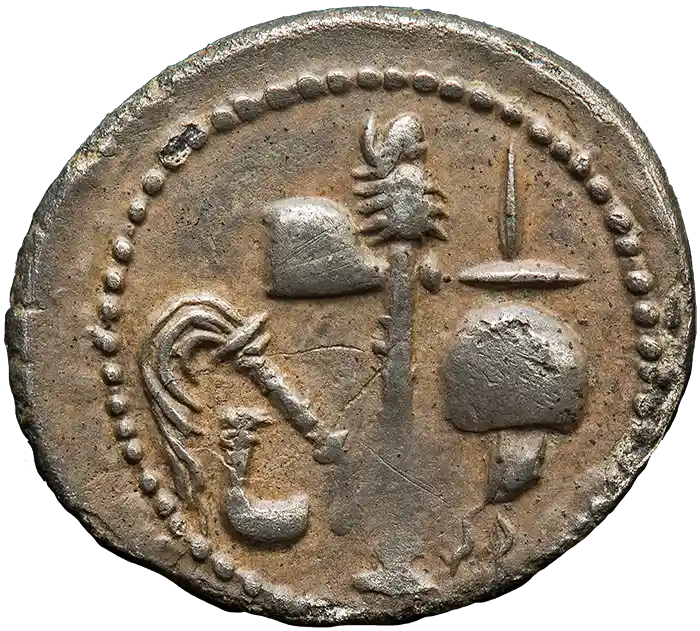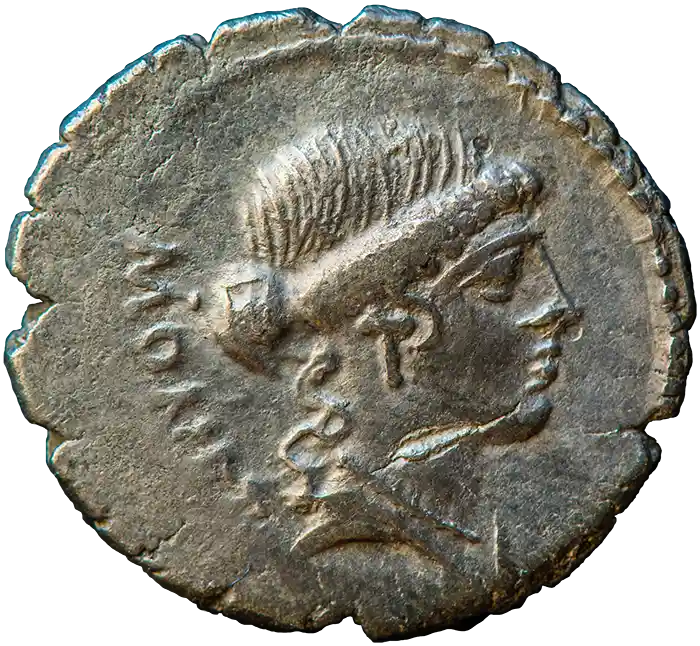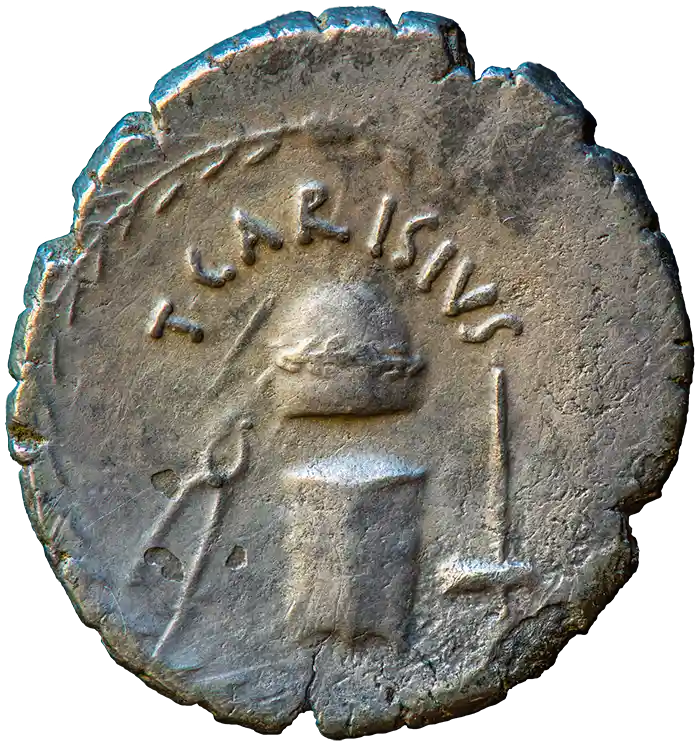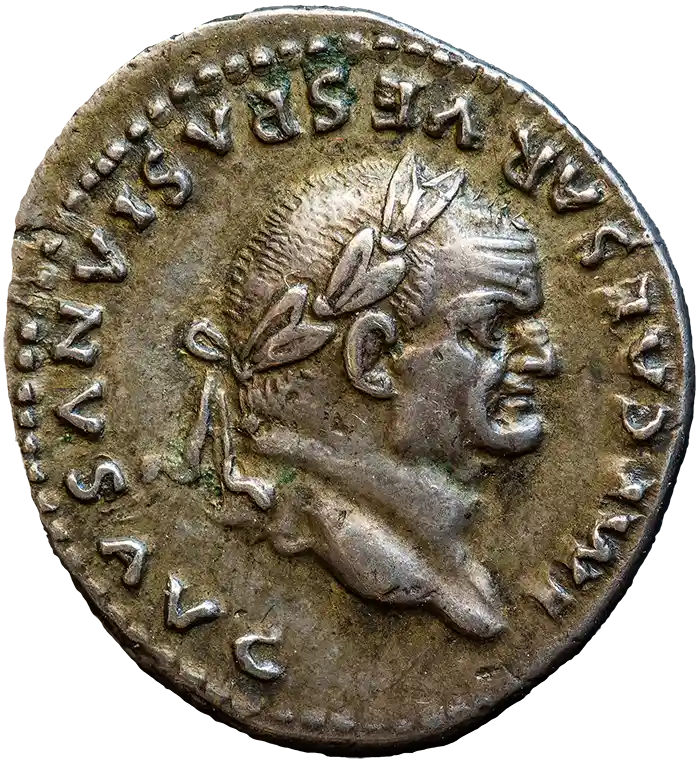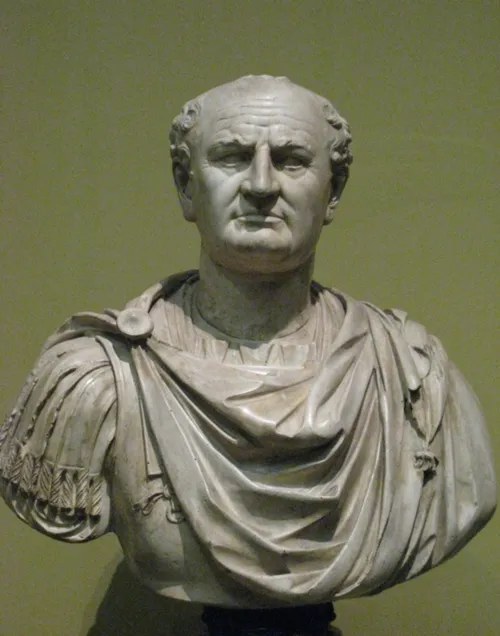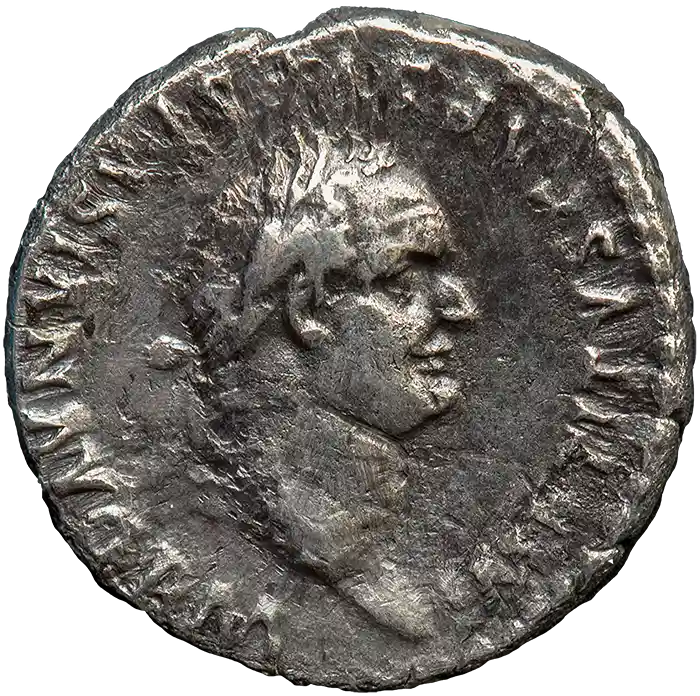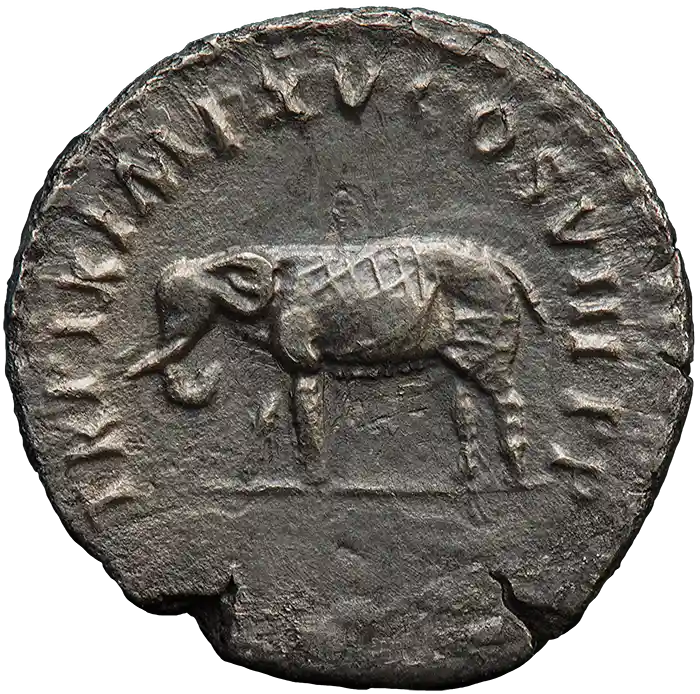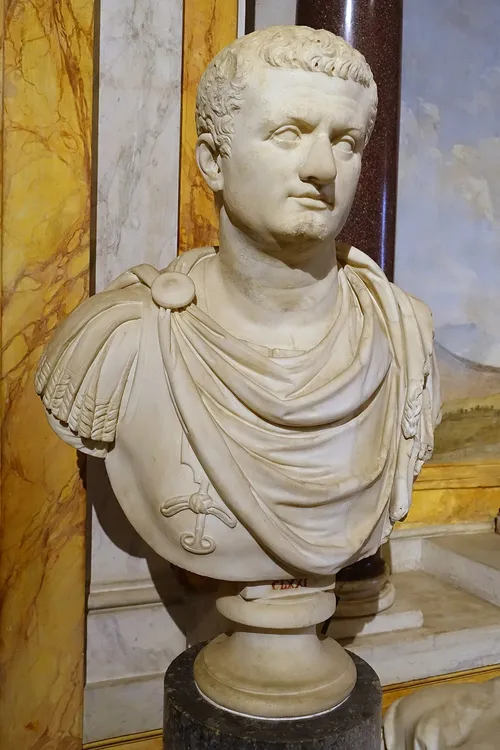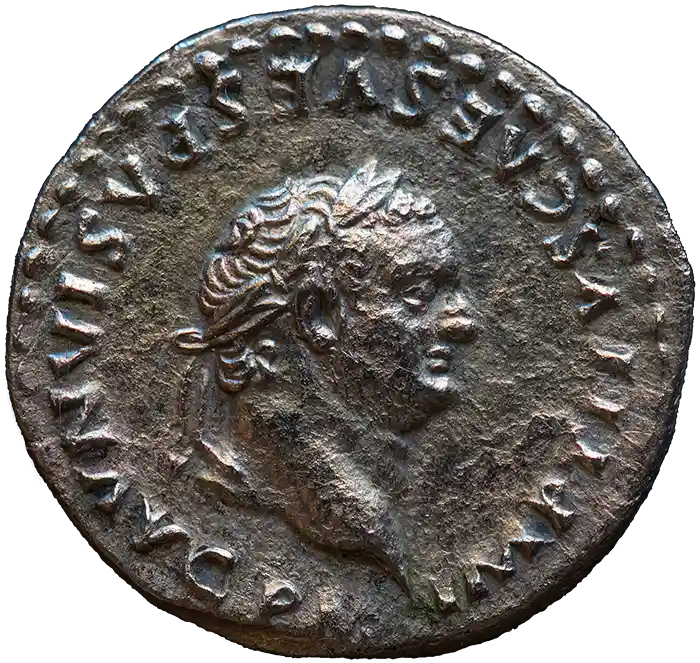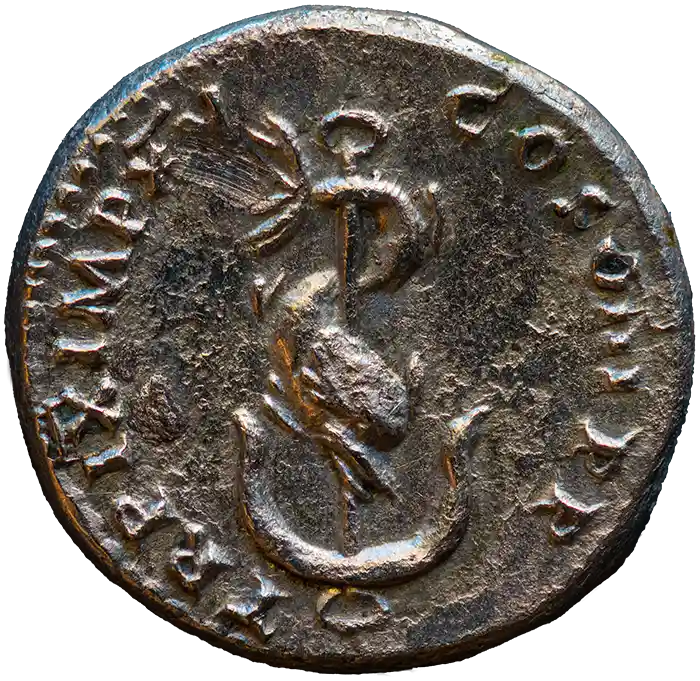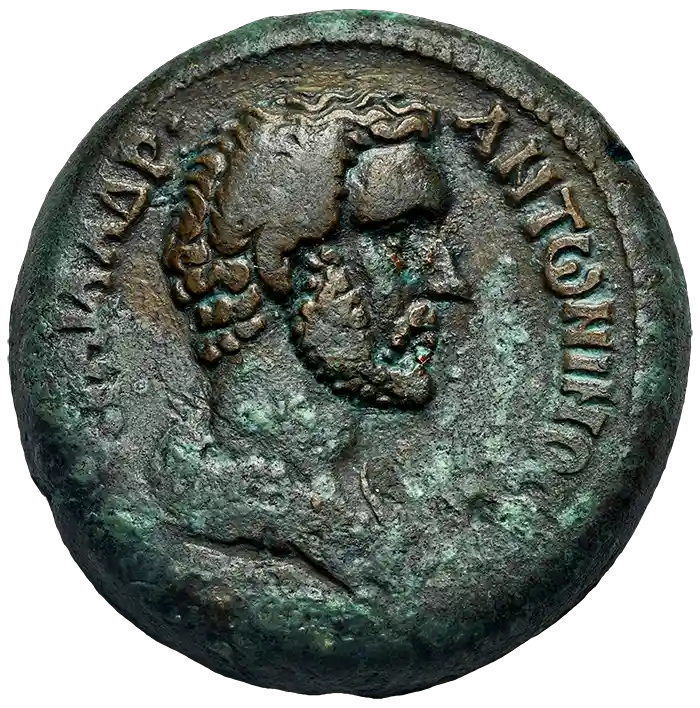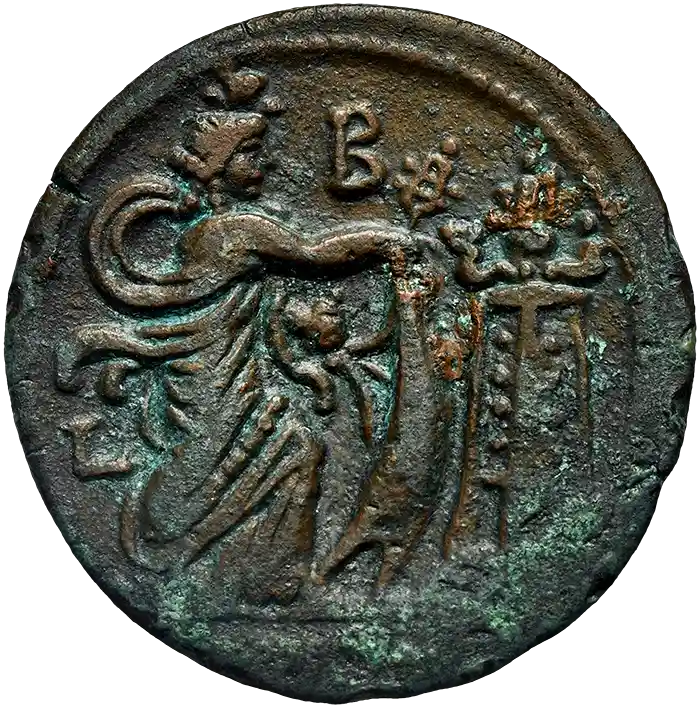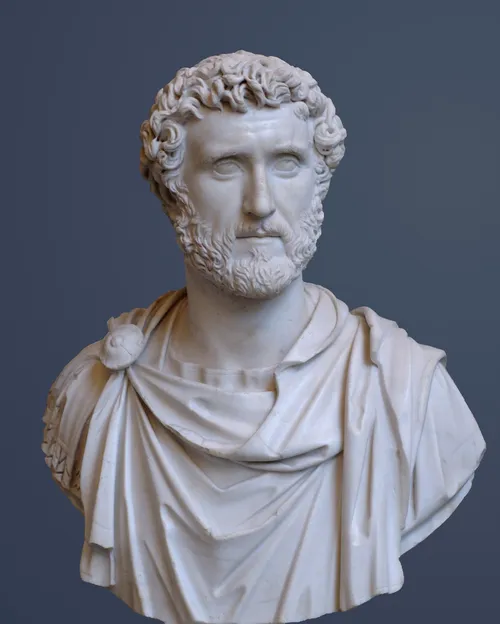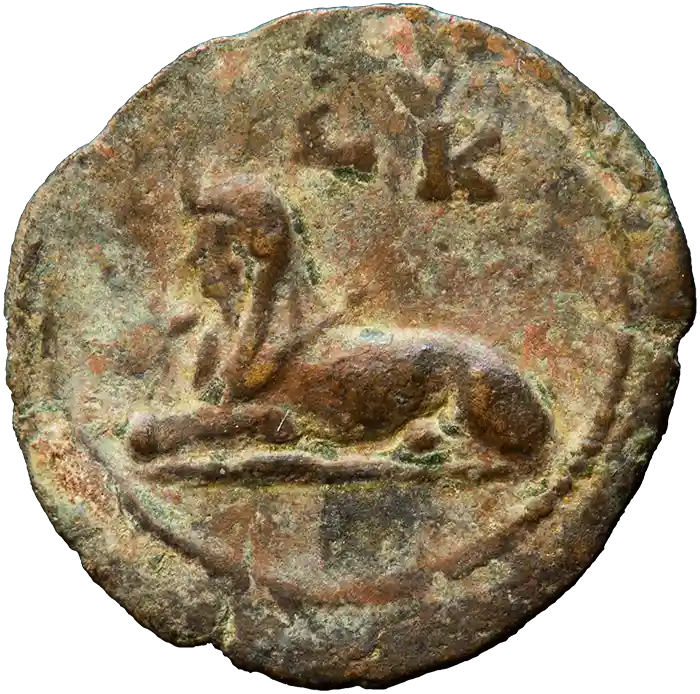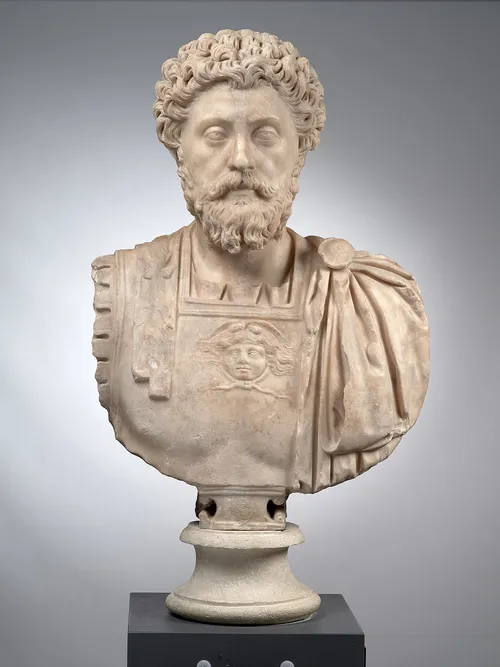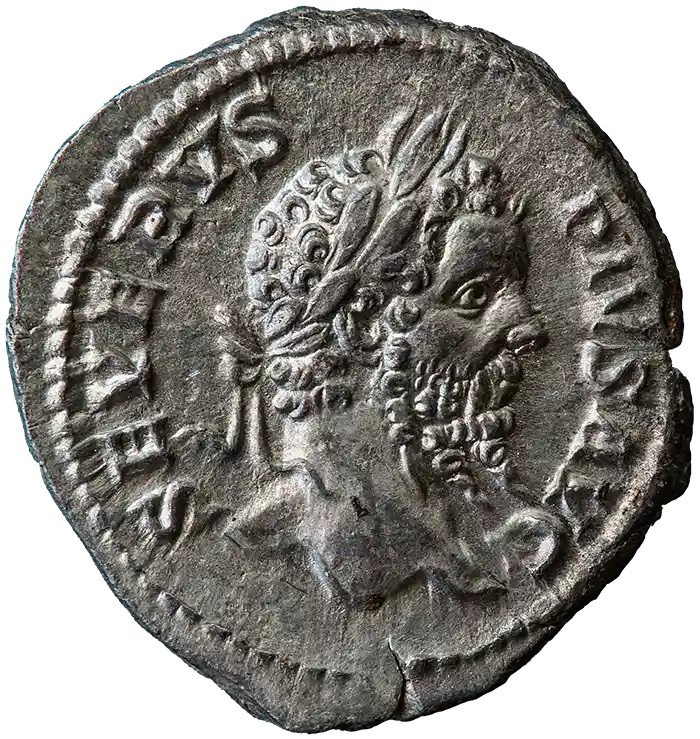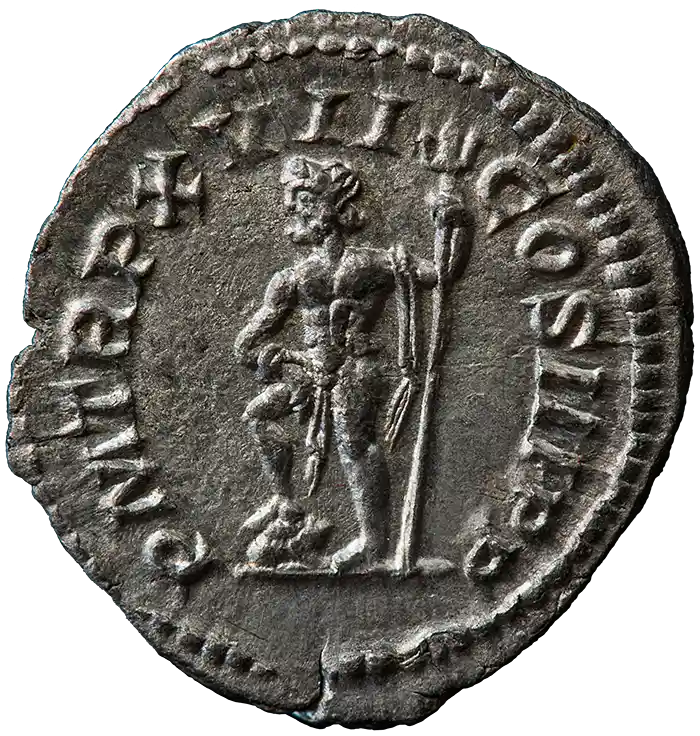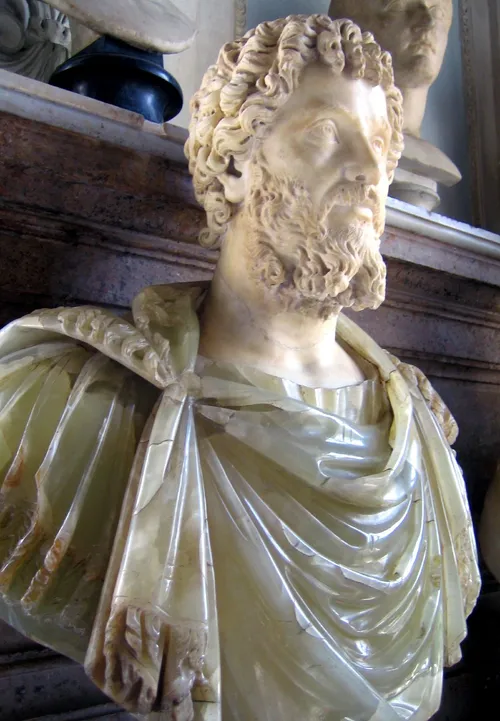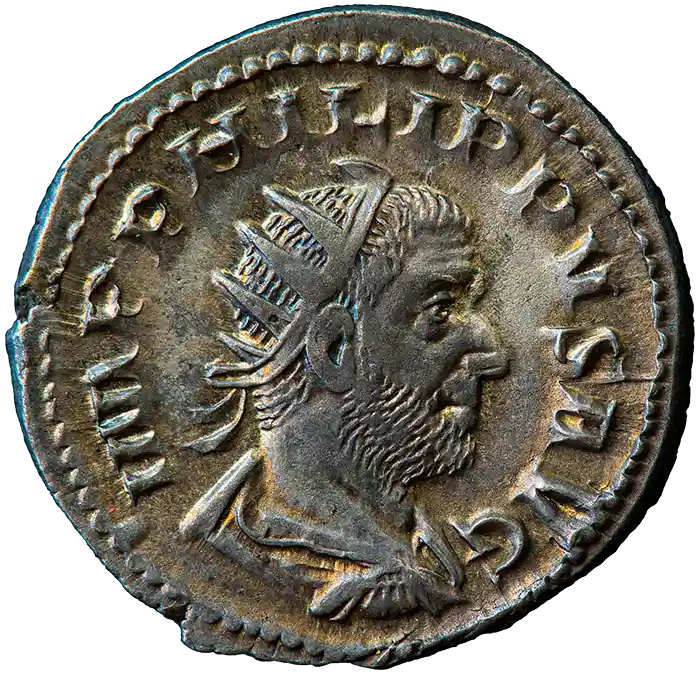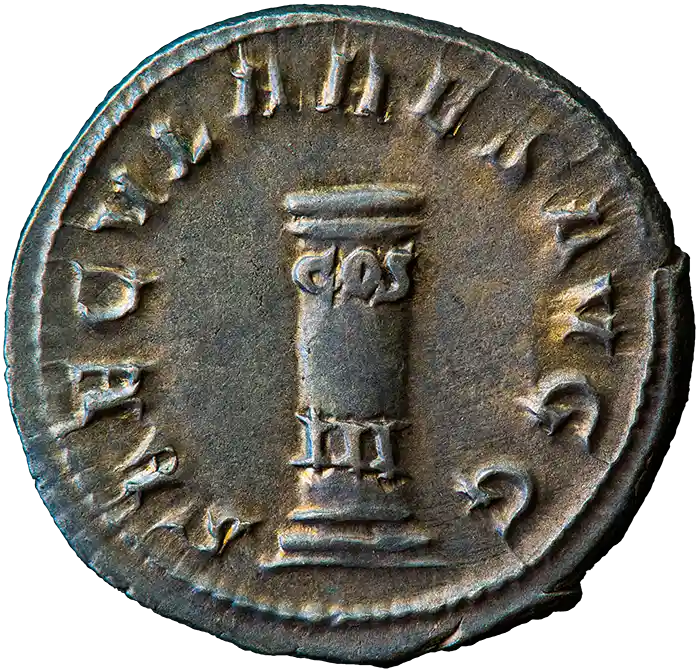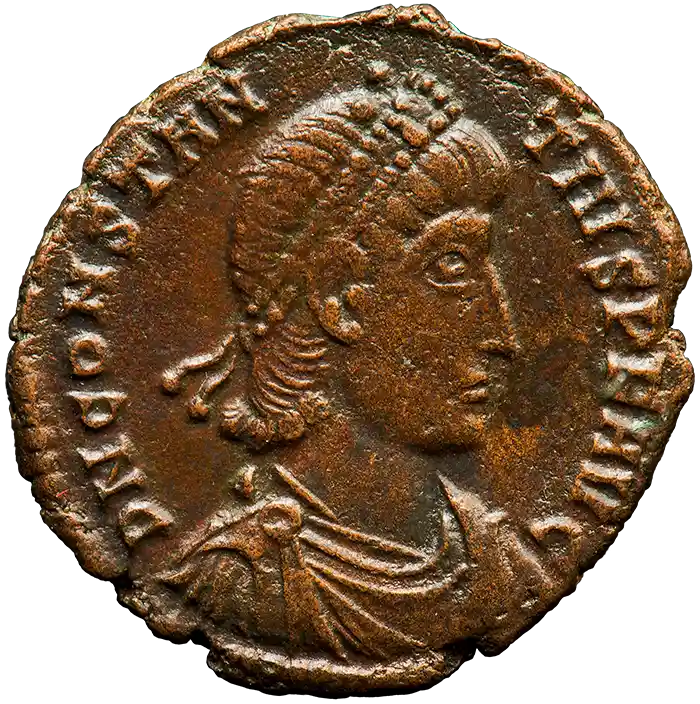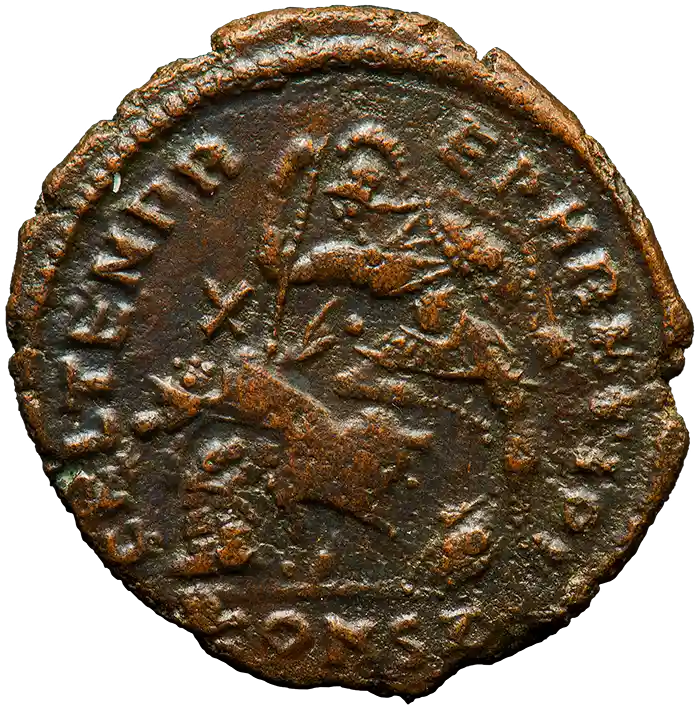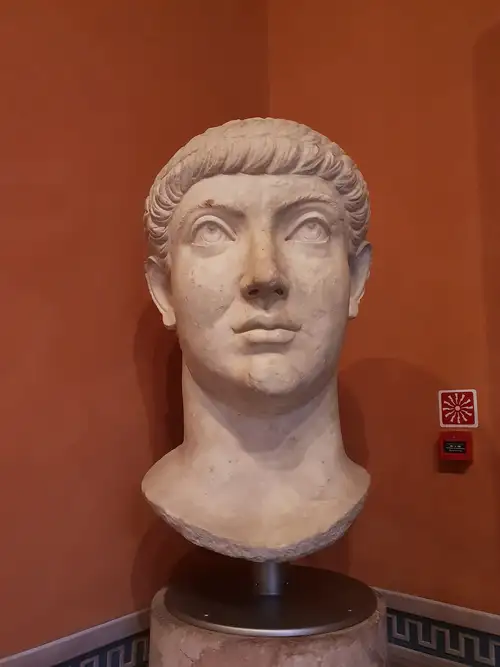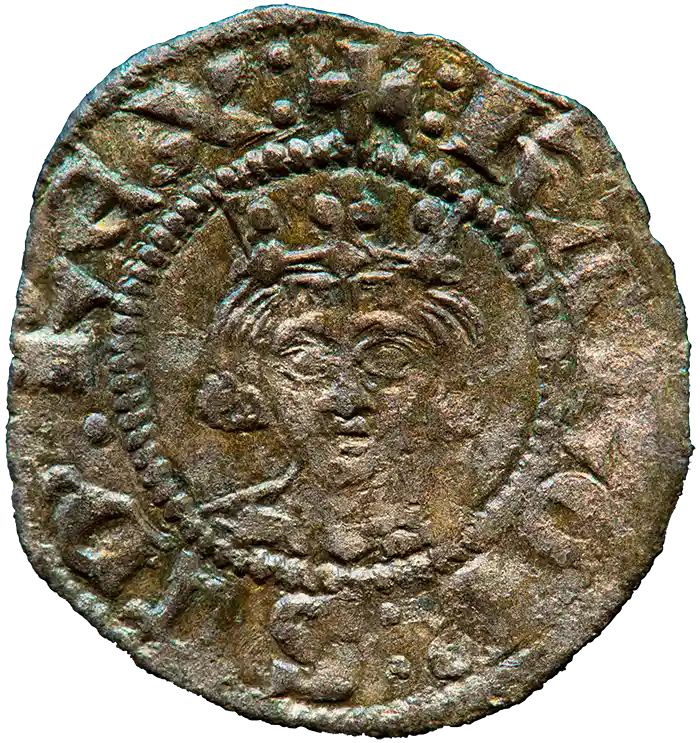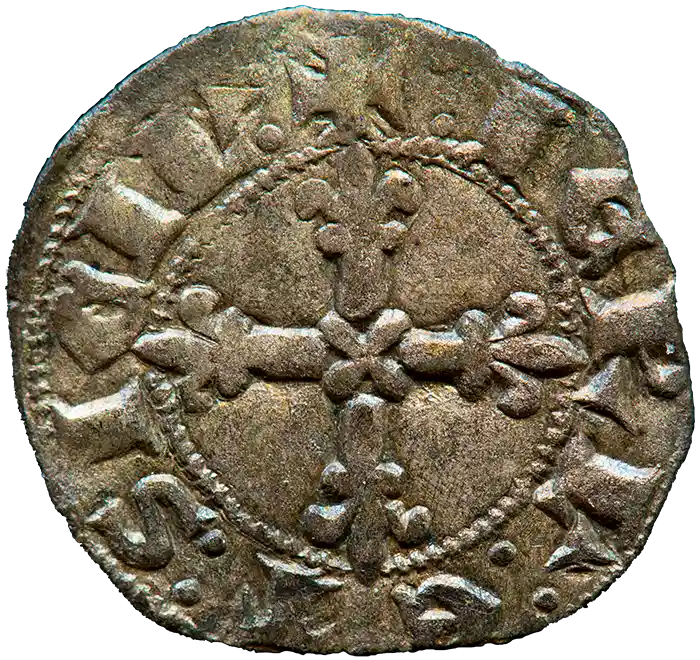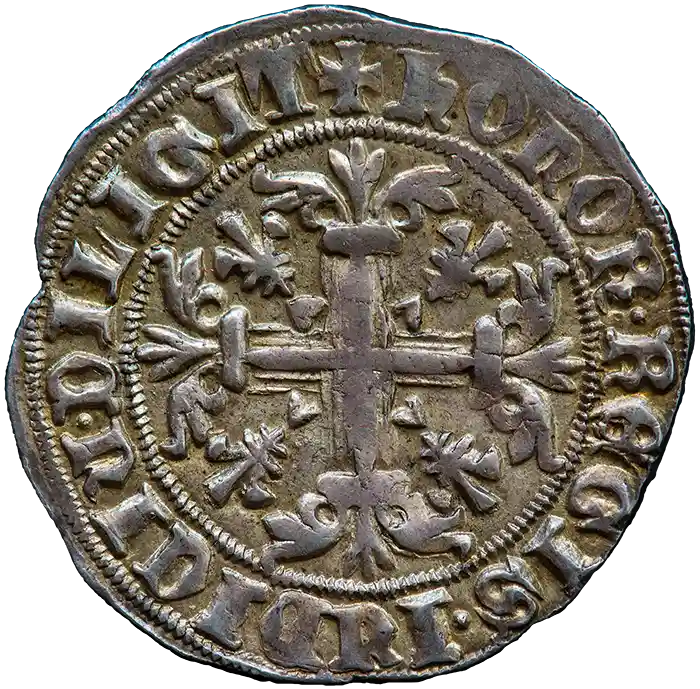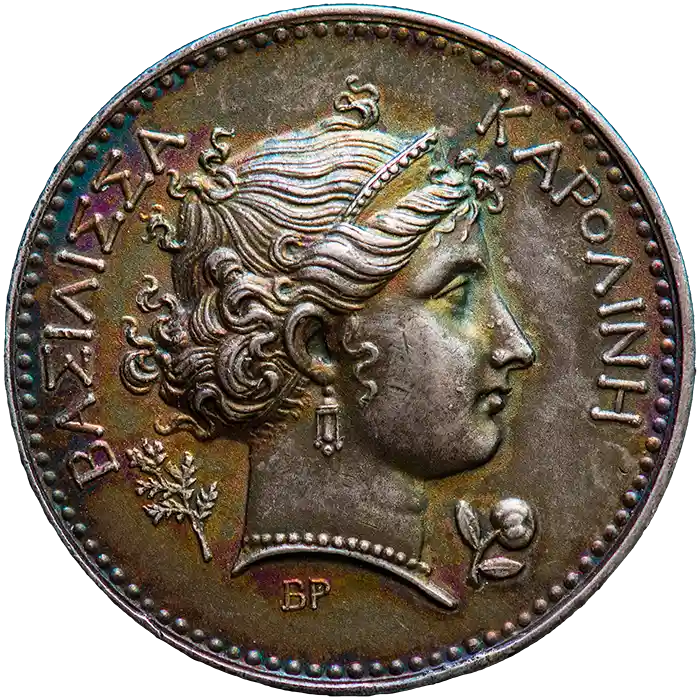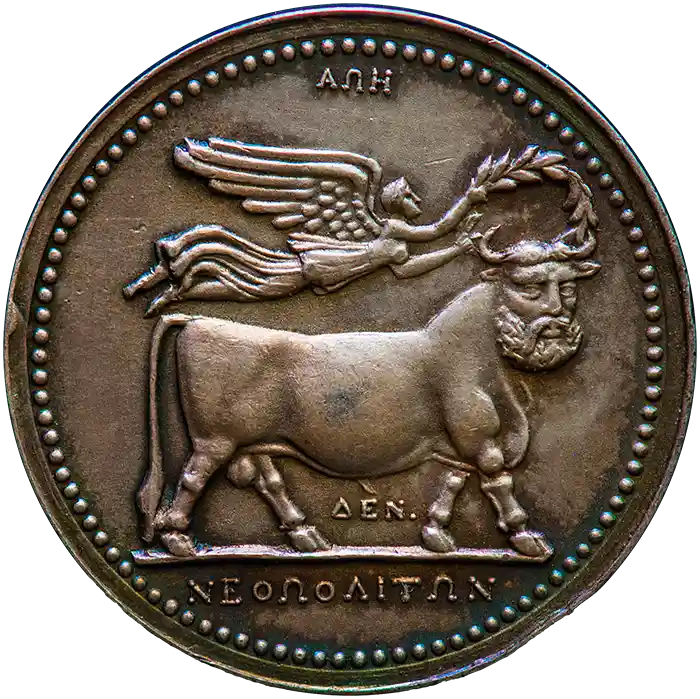Roman Imperial
Titus (79–81 AD) AR Denarius
- - - - - - - - - - - - - - - - - - - - - - -
Part of a series of coins minted by Titus to appease the wrath of the gods following the eruption of Vesuvius in 79 AD, and the plague and great fire of 80 AD. As soon as he heard of the eruption of Vesuvius, he sent consulars to Campania with food and money for the survivors and ordered the distribution of the property of those who had died without heirs (Suetonius, De Vita Caesarum). Once the danger had passed, the curatores were charged with assessing what was needed so that the population could return to live in Pompeii, Herculaneum, Stabia, and Oplontis, but they had to realise that the destruction was such that there was nothing to be done and it was better to abandon the cities. The few survivors were relocated to less damaged areas and made habitable again; despite Titus' efforts, the region was so destroyed that it was not until the time of Hadrian (120 AD) that the road system became efficient again.
The following year, 80 A.D., was the great fire of Rome that broke out while Titus was in Campania coordinating post-eruption aid. Cassius Dione recounts that it ‘burnt the time of Isis, the Saepta, the time of Neptune, the baths of Agrippa, the Pantheon, the Diribitorium, the theatre of Balbus, the box of Pompey's theatre, the buildings and libraries of Octavian, and the temple of Jupiter Capitolinus with the surrounding temples.’
Much of the precious metal coinage of Titus' short reign was devoted to depictions of a curious series of symbolic religious types. These commemorate the prayer and propitiatory services through which the emperor sought to allay public alarm at these distressing events. Thrones were set up for the gods and goddesses in pairs, each surmounted not by an image of the deity but by an emblem. These were displayed to gain the approval of the gods, representing an act of atonement, and by this means it was hoped to avoid further catastrophes. Thus, we see types such as a seat or table surmounted by a thunderbolt (symbolising Jupiter) or an ornate diadem (Juno); a dolphin entwined around an anchor, representing Neptune; a tripod surmounted by a dolphin, signifying Apollo; and a curule chair surmounted by a crown, recalling the divas, the former rulers of Rome who were deified, such as Augustus, Claudius and Titus' own father, Vespasian. Similar types appeared on coins at the beginning of the reign of Titus' younger brother Domitian. They probably refer to a further act of atonement in connection with the plague and fire of AD 80. N.B. According to Dámsky this type is related to the inauguration of the Colosseum, and part of the series of the “pulvinaria”, the seats placed to watch performances (in the Circus Maximus, the Colosseum, etc.) [See Elkins' quote here: https://www.sullacoins.com/post/make-haste-slowly)
The symbol is also found in several mosaics on the island of Delos, dear to Apollo. In particular, the trident house, possibly belonging to a merchant or ship owner, and a cavern in the theatre quarter. (The mosaics of Delos are dated ~70-200 BC).
The coin was shown by Pietro Bembo to Aldus Manutius, who adopted the wrapped dolphin at anchor as his typographic mark. Erasmus of Rotterdam writes about it:
«...The concept is this: 'Hasten slowly, for one who acts cautiously and without error is better than one who is bold and confident. Indeed, those actions that are reasoned with slow decisions are safer than those hastened by impatient intentions. That the same saying appealed to Titus Vespasian is easily understood from his very ancient coins, of which Aldo Manuzio showed me a silver one, undoubtedly of ancient Roman coinage, which he said was a gift sent to him by Pietro Bembo, a Venetian patrician, a very erudite young man, and a careful investigator of all literary antiquities. The figures represented on the coin were as follows: on one side the face of Titus Vespasian with an inscription, and on the other an anchor, the half or rudder of which was clasped by a twisted dolphin...»
(Affrettati lentamente (Festina lente) edl Erasmus of Rotterdam, 1508)
Paolo Manuzio retains his father Aldo's mark: a dolphin gripping an anchor, with the caption AL-DVS. Erasmus of Rotterdam wrote about the meaning of the image, commenting on the motto Festina lente, with a precise reference to Aldo's typographic brand.'Hasten slowly' is how we can translate the adage. Erasmus recalls two Roman emperors who held it dear: Augustus and Vespasian. The former used it frequently in his daily conversation and quoted it in his letters, exhorting with these two words:
so that what must be done should be done quickly and with the slowness of the most meticulous care.
Erasmus recalls an ancient silver coin that had been shown to him by Aldo Manuzio. A coin issued by Vespasian and donated to the printer by Pietro Bembo:
[...] on one side was the profile of Titus Vespasian with an inscription, on the other an anchor, with a dolphin wrapped around its shaft.
To understand the symbol one must refer, he says, to the figurative wisdom of the ancient Egyptians: hieroglyphics. The coin is round and the image is therefore inscribed in a circle, representing eternity, without beginning and without end. The anchor, which binds and holds the ships, indicates slowness. The dolphin, faster and more agile than any other animal, indicates speed. Semper festina lente.After the ancient philosophers and the two great Roman emperors, Aldo is the first to take up the ancient adage, translated into the image that has deservedly become his motto. Motto and image, Erasmus goes on to say, can be applied in three different ways:
[...] the first when we want to indicate that one must think long and hard before beginning a task, but, once a decision has been made, one must complete it quickly: and so the anchor signifies the time required for reflection, the dolphin the speed of execution. [...] Another use is when we mean that emotions must be restrained by reason. [...] A third when we wish to admonish that reckless haste should be avoided in the actions undertaken, a defect inherent in certain people to whom any delay, however brief, always seems useless.
Corroborating the connection between Neptune/Poseidon and the dolphin with anchor are older coin types with Poseidon's head in the obverse, and dolphin wrapped around an anchor in the reverse:
PAMPHYLIA. Attaleia. Ae (Circa 159-100 BC).
Laureate head of Poseidon right.
Rev: ATTAΛΕΩΝ./ Dolphin-entwined anchor.
Cf. SNG BN 223-4: https://www.acsearch.info/search.html?id=8823467
BAKTRIA, Indo-Greek Kingdom. Nikias, circa 129-125 BC. AE (Bronze, 20x23 mm, 8.23 g, 6 h), uncertain mint in Paropamisadai. BAΣIΛEΩΣ - ΣΩTHPOΣ - NIKIOY Laureate and draped bust of Poseidon to right, with trident over his left shoulder. Rev. 'Maharajasa tratarasa Nikiasa' (in Karoshti) Anchor entwined by dolphin; to lower right, monogram. Bopearachchi 4. HGC 12, 234: https://www.acsearch.info/search.html?id=6505184
We also have cases where the symbol has been used as monogram / countermark:
C. Vibius C.f. Pansa. 90 B.C. AR denarius (17 mm, 3.80 g, 11 h). Rome mint. PANSA behind, laureate head of Apollo right; dolphin coiled around anchor to lower right / C • VIBIV[S] in exergue, Minerva driving quadriga right, holding trophy, reins, and scepte. Crawford 342/5b; Sydenham 684; RSC Vibia 1: https://www.acsearch.info/search.html?id=2584315
Then we have the Denarius Serratus of Papius from 79 BC:
L Papius Denarius Serratus
Obv:– Head of Juno Sospita right, wearing goat skin tied under chin. Behind head, Dolphin wrapped around anchor.Rev:– Gryphon running right; in ex., L. PAPI.; in field, Hippocamp Minted in Rome from . B.C. 79. Reference(s) – RSC Papia 1. RRC 384/1. RCTV 311. Symbol variety – RRC -. Babelon -. BMCRR -. A previously unknown symbol pair and the only known example: https://www.numisforums.com/topic/1124-anyone-up-for-a-game-of-coin-uno/?do=findComment&comment=95713
The symbol has then been adopted by Christians.

